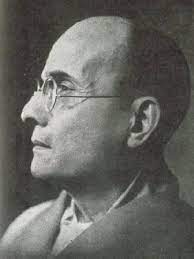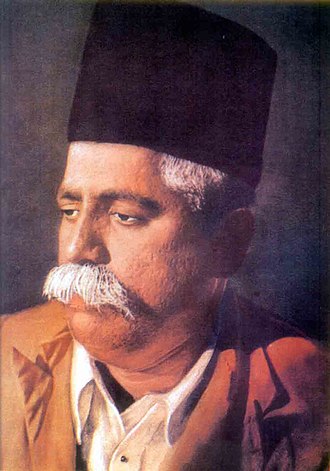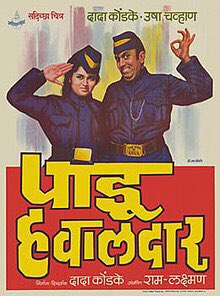Vinayak Damodar Savarkar is one of the most complex personalities in recent history. Read this thread to know more about #Savarkar, the man, revolutionary and #Hindutva demagogue.
#thread #history #RahulGandhi #MahatmaGandhi #UddhavThackeray #RSS #ShivSena #Maharashtra #Hindu
#thread #history #RahulGandhi #MahatmaGandhi #UddhavThackeray #RSS #ShivSena #Maharashtra #Hindu

Unfortunately, when the debate is polarised between the extremes of black & white, it does not do justice to the complex personality of #Savarkar as a man, revolutionary, reformer, #Hindutva ideologue & an accused in the assassination of #MahatmaGandhi.
What makes #Savarkar stand out among his contemporaries is his strong hero complex bordering on narcissism, and the extreme and often contradictory elements of his personality.
While the views of his contemporaries like #MahatmaGandhi and B.R. #Ambedkar changed over time, #Savarkar never outgrew his boyhood fantasies of militant nationalism and militarisation. These ossified impulses would continue to shape his politics.
In November 1899, #Savarkar launched a revolutionary group ‘Rashtrabhakta Samuha.’ Savarkar & his associates wanted complete Independence for India. It was eventually renamed as ‘Abhinav Bharat’ after the ‘Young Italy’ movement of the Italian revolutionary Guiseppe Mazzini.
Before the rise of Communism and the Russian revolution, it was Mazzini who held sway over the nationalists in India, including Savarkar, who wrote his biography in 1907. Savarkar’s associates included both Brahmins and non-Brahmins.
As a student at the at the Fergusson College in Pune, Savarkar organised a massive bonfire of foreign-made clothes and other imported material with Lokmanya Tilak in attendance. This is said to be the first such bonfire of foreign made clothes.
On 9 June 1906, Savarkar (23) bid good bye to wife Yamuna (Mai) and their one-and-half year old son Prabhakar and left for England to study law. But he was a marked man. On 14 June 1906, the Bombay govt wrote to Scotland Yard about him.
Savarkar was studying for the Bar in London. But, unlike some of his fellow students from India, he was not swayed by Communism, Fabian socialism or by the larger debates around socio-economic inequities.
His rigid opinions and self-centered nature can be gauged from an anecdote. Later in life, when someone asked him whether he had read Karl Marx, the counter-question was said to be swift: “Had Marx read Savarkar?” Of course, accounts suggest he had read about Communism.
#Savarkar penned a book on the revolt of 1857, which challenged the contemporary view and colonial propaganda of it being a mere ‘sepoy’ mutiny & hailed it as an example of Hindu-Muslim unity. The book was banned in India until 1946, though some read it surreptitiously.
Like this book, the bulk of Savarkar’s writings were on history. But instead of a scientific and dispassionate explication of facts, most of them were full of romantic and rhetorical flourishes.
Savarkar was arrested for his revolutionary activities in London in 1910, sentenced to two terms of imprisonment of 25 years each & deported to the dreaded Cellular Jail in the Andamans.
These sentences were to run one after another, which meant he would be released from prison only in 1960 had he survived the ordeal.
It is from this prison, known for its harsh conditions, that #Savarkar wrote his clemency petitions to the British. #RahulGandhi referred to these letters as an example of Savarkar’s surrender to the British.
A more nuanced view, albeit 1 that may attract charges of humanising Savarkar, would judge hi, not based on the methods that he used to come out of the prison, but on his later actions.
Savarkar and elder brother Babarao were shifted to jails in the Bombay Presidency in May 1921
Savarkar and elder brother Babarao were shifted to jails in the Bombay Presidency in May 1921
While Babarao was released unconditionally in September 1922, Savarkar was discharged in January 1924 on the condition that he would reside in Ratnagiri district and not go beyond its limits without the permission of the authorities and not participate in politics.
The Savarkar who went into the confines of the Cellular jail was a different man from the one who emerged from it a decade on. While the old Savarkar was an advocate of Hindu-Muslim unity to rid India of British rule, the new Savarkar was burning with anger against the Muslims
This bitterness is attributed to Savarkar’s experience in the Andamans & the religious fanaticism of Muslim warders in the jail. The reasons for this change of heart remain controversial. But, Savarkar’s hatred for Muslims was not a tactic to ingratiate himself with the British
Unlike Jinnah, for Savarkar, the personal was political and vice-versa. Though the writings of his fellow inmates suggest that Muslim prisoners too had to bear the brunt of these brutalities, Savarkar’s psyche carried the scars from the Andamans.
In 1921, at Ratnagiri, he wrote his seminal work ‘Essentials of Hindutva,’ which laid the foundations of Hindutva as an ideology. It laid emphasis on cultural nationalism as against a territorial one, & said India was for the Hindus alone, and not for the Muslims or Christians!
Savarkar identified caste as the factor preventing Hindu unity & busied himself with activities like inter-dining, temple entry for Dalits and ‘shuddhi’. But he was not a radical, anti-caste reformer like Phule or Ambedkar, and retained some upper-class biases.
While Savarkar’s critics claim that he was the first to propound the two-nation theory, that eventually led to #India's partition, the idea had been floated over three decades before he wrote his text. This included Sir Syed Ahmed Khan (1888), Lala Lajpatrai (1899 & 1924),
(Lajpat Rai criticised both, Pan-Islamism and Hindu revivalism), poet Sir Allama Muhammed Iqbal and Chaudhuri Rahmat Ali (1930s). The launch of the All-India Muslim League in December 1906, Punjab Hindu Sabha in 1909 &
All India Hindu Mahasabha in 1915, gradually widened the schism between Hindus and Muslims. Eventually, Hindu fanaticism was also one of the forces responsible for partition. As Rammanohar Lohia points out in his ‘Guilty Men of India’s Partition,’
the opposition of fanatical Hinduism to partition did not make any sense, for one of the forces that partitioned this country was Hindu fanaticism.
While it is argued that Savarkar was a British collaborator and aided their divide-and-rule policy, British government records, which lay down a fascinating psychological profile of the man, reveal that he continued to “show a strong anti-Muhammadan bias and... (also) entertain
feelings of disaffection against [the] government” during confinement in Ratnagiri. He was also found to have been “collecting around himself irresponsible youths (sic) to further his revolutionary objects under the pretext of Harijan upliftment work”.
The restrictions on Savarkar were continued due to this anti-British sentiment till he was released in 1937 by the short-lived Dhanjishah Cooper-Jamnadas Mehta ministry in the Bombay province.
In Ratnagiri, Muslims were also condescendingly treated like untouchables by Hindus. Yet, there is no mention of Savarkar’s anti-caste mission extending to the Muslims.
Apart from Muslims, Savarkar had another sworn adversary—Gandhi and, by extension, the Congress. When the restraints on him were removed, Savarkar was in his fifties and past his prime. By then, Gandhi had firmly established himself in the political firmament.
It was obvious that Savarkar could not work with Gandhi. Savarkar was not favorably disposed to Gandhi’s agenda of non-violence, satyagraha and Hindu-Muslim unity. His poem ‘Gomantak’ makes his contempt for these methods obvious.
His works like the play ‘Sangeet Usshap’ also paints Muslims as proselythisers, villains and sexual predators through its anti-heroes.
Savarkar’s politics was shaped more by his opposition to Gandhi and the Congress than to the British or Muslims.
Savarkar’s politics was shaped more by his opposition to Gandhi and the Congress than to the British or Muslims.
Unlike the Congress, which worked to keep the Muslim League away, the Hindu Mahasabha was part of coalition governments with the League in Bengal and Sindh.
That Savarkar had only a small pocket of support, largely among the Marathi upper castes, became evident after the Mahasabha’s drubbing in the 1945-46 elections.
Savarkar considered himself to be a born leader & had a strong hero complex. His constant revelling in the mental image of the leader and his background in revolutionary activities may have imposed limitations on Savarkar’s leadership of a democratic political party.
In 1948, #MahatmaGandhi was assassinated by #NathuramGodse and #Savarkar was arrested as a co-accused. Savarkar was found not guilty and acquitted by the trial court. Eventually, the report of Justice J.L. Kapur Commission of Inquiry (1969) indicted Savarkar saying:
“All these facts taken together were destructive of any theory other than the conspiracy to murder by Savarkar and his group.” This was based on statements given by Savarkar’s secretary Gajanan Damle and bodyguard Appa Kasar to the Bombay police.
However, in 2018, the Supreme Court ruled that the finding of the commission was a “general observation” and did not have the effect of overturning the verdict of the criminal court, which had acquitted Savarkar.
To sum this up, who was Savarkar? A revolutionary or a demagogue who deepened the Hindu-Muslim divide thus aiding the British?
An emotional, romantic poet who wrote 'Ne Majasi Ne...' and 'Jayostute...' or a stone-hearted man who was unfazed by the death of his infant daughter Shalini? He even refused to meet his long-suffering wife Yamunabai on her deathbed.
A short story in Marathi by the author Vidyadhar Pundalik movingly depicts Savarkar’s cold and indifferent treatment of his wife.
Was Savarkar a social reformer or upper-caste apologist driven by the urge to prevent the lower castes from being swayed by Muslim and Christian proselytisers rather than by a desire for genuine social reform?
Was he a freedom-fighter or a man who let his sense of envy towards Gandhi and the Congress dictate his larger politics and actions? Like in most instances, the truth may lie in the uncomfortable middle ground.
• • •
Missing some Tweet in this thread? You can try to
force a refresh

 Read on Twitter
Read on Twitter












